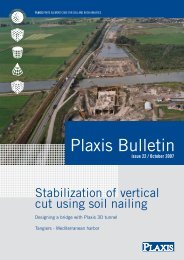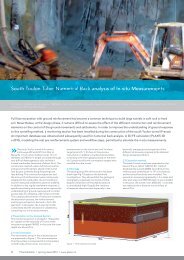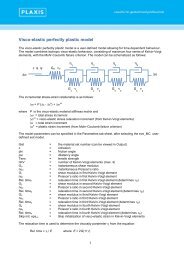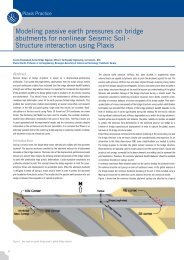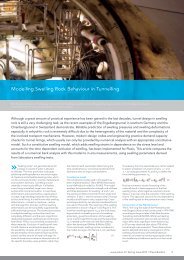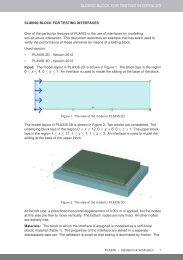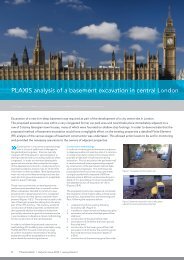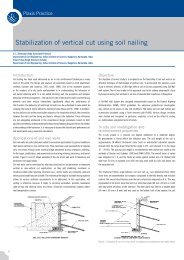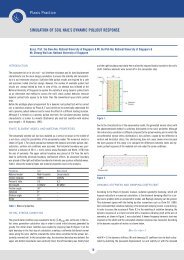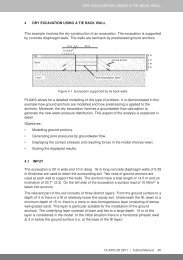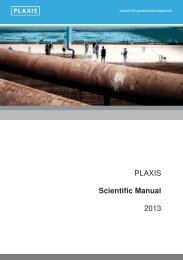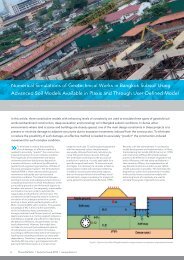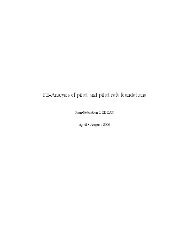PLAXIS LIQUEFACTION MODEL UBC3D-PLM - Knowledge Base
PLAXIS LIQUEFACTION MODEL UBC3D-PLM - Knowledge Base
PLAXIS LIQUEFACTION MODEL UBC3D-PLM - Knowledge Base
- No tags were found...
You also want an ePaper? Increase the reach of your titles
YUMPU automatically turns print PDFs into web optimized ePapers that Google loves.
Chapter 1Key Features of <strong>UBC3D</strong>The <strong>UBC3D</strong>-<strong>PLM</strong> model has been developed by Tsegaye (2010) and implementedas a user-defined model in <strong>PLAXIS</strong>. It is closely based on theUBCSAND model introduced by Puebla et al. (1997), Beaty and Byrne(1998). The original UBCSAND is a 2-D model developed for prediction ofliquefaction in sandy soils. Its formulation is based on classical plasticitytheory with a hyperbolic strain hardening rule, based on the Duncan-Changapproach with modifications. The hardening rule relates the mobilized frictionangle to the plastic shear strain at a given stress. It contains a 2-DMohr-Coulomb yield surface and a corresponding non-associated plastic potentialfunction. The flow rule in the model is based on the stress-dilatancytheory developed by Rowe (1962), linearised and simplified according toenergy considerations.The main difference between the UBCSAND model and the <strong>UBC3D</strong>model is the latter generalized 3-D formulation. The <strong>UBC3D</strong> model uses theMohr-Coulomb yield condition in a 3-D principal stress space. Moreover, amodified non-associated plastic potential function based on Drucker-Prager’scriterion is used, in order to maintain the assumption of stress-strain coaxialityin the deviatoric plane for a stress path beginning from the isotropicline (Tsegaye, 2010).2



